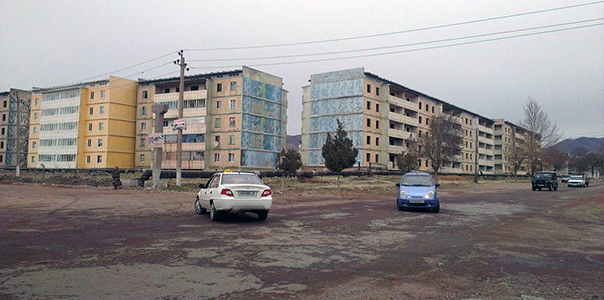
During the Soviet era, mining cities were often the places where working class Soviet citizen or an engineer were eager to move to and work, in order to enjoy the privileges of relatively high wagers, special provision in consumer goods, and a well-developed social and cultural infrastructure.
With the end of the Soviet Union this, so-called system of “Moscow provision” collapsed, alongside with the centrally managed industries and the entire economic system. This led to a massive decline of the industrial base which depended on the economic channels built and connected throughout the territory of the Soviet Union. After the end of the Soviet Union, economic units and industries were left to function on their own relying on local and national resources and governance. Mining was privatised in most parts of the Soviet Union. Some cities with lower scale or with less important raw materials were hit more than others which had more attractive products on offer, such as oil, gold, fertilisers, and others.
What did replace the state as main economic actor, how did political power shift – e.g. from Moscow to global mining enterprises – and how cities and citizens make ends meet without subsidies centralised distribution of resources and manpower?
Post-Soviet shock

New independent governments were either unable or reluctant to take care of safety nets for the struggling population. “Shock therapy” economic reforms met old, Soviet-school planning practices and authoritarian decision-making processes. Particularly post-Soviet peripheries had to face economic collapse and political conflicts, leading to devastation of certain regions and growing uncertainty — leading to mass outmigration, most saliently from formerly prosperous mining cities. Shrinking became an omnipresent phenomenon. This concerned demography, as well as the scope of industrial activities, investments, infrastructures and the relative political weight of these cities on the national scale. Additionally, environmental and health conditions continued to deteriorate, e.g. when funds for tailing maintenance withered. Working conditions became not only economically precarious but also increasingly insecure, considering the outdated mining equipment and lack of investments. Economic collapse and the withdrawal of social security systems brought not only poverty and uncertainty but also a deterioration of basic health conditions. Furthermore, lack of investment and maintenance, as well as the hollowing out of residential districts through outmigration had severe consequences on basic services, impacting water supply, energy provision and heating.
Stark images of abandoned prefab houses and industrial sites also abound in the case study cities of Janatas in Kazakhstan, Shurab in Tajikistan and Chiatura in Georgia. These are the focal points of our collaborative project entitled “Mining cities in Caucasus and central Asia: survival strategies under conditions of extreme peripheralisation”. The project spans from 2015 to 2020 and involves local senior and junior researchers based in these countries, as well as three scholars at IfL.
Beyond ruins

The project goes well beyond “ruin porn” and seeks to understand how residents in those devastated cities survive economically and physically. The results of these studies show a wide range of economic and social networking strategies. In Janatas, for instance, we witness informal economies networks based on of mutual debt, to make ends meet to afford basic foodstuff from little shops. In Shurab mardikor labour (informal labourers) makes a large portion of the income of local residents including the mining workers who are mainly hired on the basis of informal employment (cash based and sales-based salaries). Due to the absence of running water where the water for all purposes are bought and is one of the luxury items where most of the earned income is spent in Shurab. In Chiatura, people survive partly relying on the state welfare, agricultural sustenance, bank credits (even for normal daily expenses people borrow money from the local banks creating another debt system popularised in Georgia) and entrepreneurship. Still, mining has retained some importance – in spite of its economic and environmental hazards – but a diversification of revenue-generating activities and new forms of solidarity are emerging.
Dr Rano Turaeva has been working as a scientist at the IfL since mid-2018, which she got to know as a guest researcher in 2015/2016, during the preliminary phase of the research project presented here.
